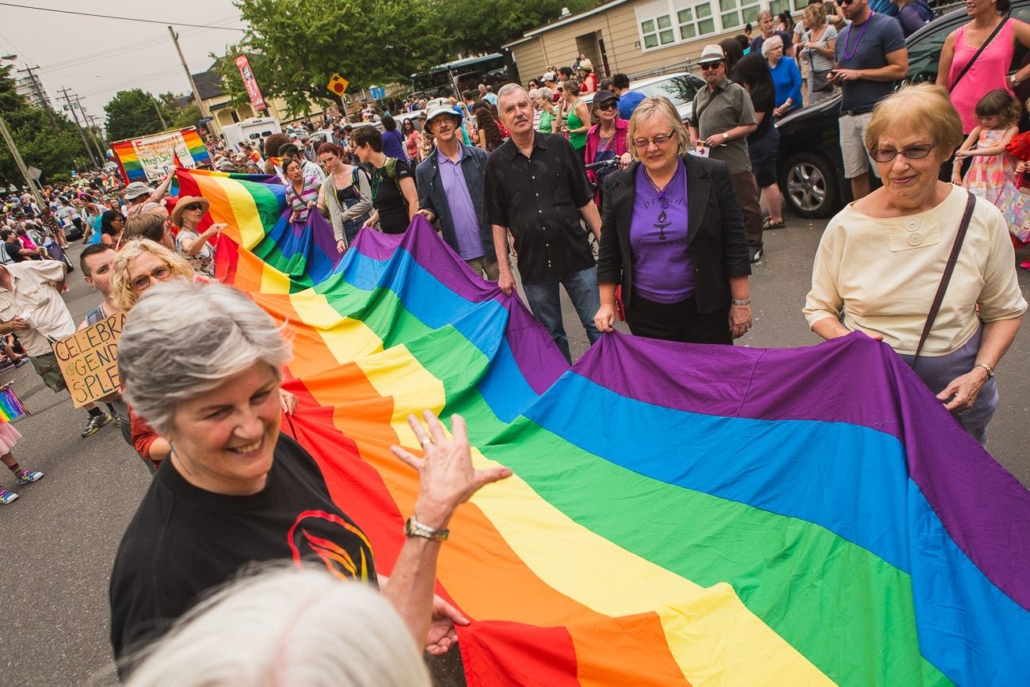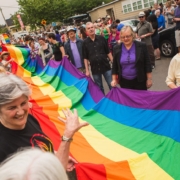We’re Still Here, We’re Still Queer – Newsletter Feature
We’re Still Here, We’re Still Queer – Newsletter Feature
October 6, 2021
by Alan Segal (he/him)
We’re Still Here, We’re Still Queer:
Over 50 and Still Proud

It’s not as if Pride is new. Plunge into our history of otherness and you float past organizations and individuals that carved space in the larger social universe for something more than a standard gender or sexuality. In the frenzied times of the 1960s, and then of post-Stonewall activism and social critique, Pride was created. Foremost for ourselves, who needed public declarations and celebrations. But also to tell everyone we are here.
Over decades, Pride has expanded into much more than parades. Cultures from around the world, of sexual and gender nonconformity and sometimes rebellion, found their way into Pride conferences. Into arts performances. And political action.
So here we are, in Canada at least, in a society of formal rights and increasing public recognition. Pride, consistent with many large events, has symbolic power but also particular meanings that have fanned a years-long critique of it. In 2021, these have become razor-sharp. This year, no parades. If they return, possibly no police participation. And not only because of pandemic protocols.
For this newsletter article I spoke with people older than 50. I asked about their first awareness of Pride and its significance for them. I inquired if its importance still held their appreciation and support.
Patrick has known he is gay throughout his life. Like all of us, the language he embraced for himself he learned after this knowledge was inside him. But using language ‘made’ him. It was a sound that summarized him in his own ears. Did Pride contribute to this? No. He told me he didn’t need it for identity exploration or expression. But it was a grand party time. The clubs were pumped and he loved every second of it. Especially since it was during one Pride year in a Vancouver club that he met his husband.
Not everybody needs a Pride experience. David was always clear about himself and went to whatever public places were available in Victoria. Pre-pride, the best of its value was noticeable in those places. However, the earliest versions of it were a bit restrained, concentrating on personal esteem and development. On accepting our own sexuality, to convince society also to accept it.
Society changed, people changed, laws changed, and Pride was different. Changes it helped bring about brought changes to how we organized. Contention has always been part of our efforts because humans aren’t known for reliable harmony. But overriding this has been a steady purpose.
Danna had a purposeful, but not smooth path toward Pride. A married male for years, Danna gradually became clearer to herself as a queer trans woman. Acknowledgment of the meanings of it, and its possible link to Pride, came later as well. They were not always sedate observations. As Danna expressed it, trans life wasn’t a clear or welcomed part of the Pride message. Older women are already marginalized, whether queer or not. Once they become ‘unfuckable’, they become useless. In various forms, and even to those expected to be allies.
Speaking with Danna reminded me that for LGBTQ2AS+ individuals, as for most people, progress combines purpose, focus, hardship and luck. Pride powers this through stumbling and conflict. When Danna saw younger people who seemed to have more community, and also saw how they repudiated earlier terminologies they were supposed to fit into, she also saw them create new and more complex understanding of being alive.
Cornie’s first taste and thrill connected to Pride was in Edmonton. He marched in the first Pride parade in that city. Cornie was filled with the feeling of action, of being militant and out. Five hundred people participated. The march ended in a park and the congregation of Potters Church stood outside their church with signs stating the marchers were going to hell.
Fiona and Nadine have been a couple for many years. They lived in Canada before moving to Europe almost a decade ago. They always valued Pride conceptually but never its particularity. From the beginning, it was a male same-sex manifestation – a defense and also a celebration, of personal sexual choice and expression. And a demand that all the social relations that uphold and fill in the spaces that make expression worthwhile, must be accepted as well. All of which is good, but was and is, still, a male-dominated understanding. Lesbians were never really understood as people to be fully included in the meanings of Pride. Therefore, they never participated emotionally in the celebration.
Jim knew he was gay from an early age and was aware of pride from its beginnings. For his own personal and sexual development, Pride was irrelevant. But it was and is a cultural declaration, and a major party. Enjoyable, an assertion of community. Jim is Patrick’s husband. He resisted for years Patrick’s urging that they get married. He didn’t need or want the state to ‘reward’ his loving by offering its recognition. Patrick offered a different perspective. Both are not religious at all, probably don’t believe god exists, but grew up as Catholics. Pride and gay marriage placed them in the pantheon of their families’ respect and extension of legitimacy.
I ended my summer in a romp through Nova Scotia, and in Halifax during its Pride celebrations. Bernard grew up in rural Nova Scotia. When he moved to Halifax in his early 20s, gay awareness was limited and riven with guilt and social turmoil. Pride was a small event but size does not mean pointlessness. He was affected just by its existence. It meant freedom and formed part of the motivation to detach himself from what he calls a religious cult from which he had to mentally and intellectually disassociate himself. Especially regarding its views of sexuality. In his late 20s, he moved to Vancouver and was dazzled by the colour and pageantry, the rich social assertions and spiciness of its Pride celebrations.
These chronicles are perfunctory in a sense, a bare-bones description of lives at the moment they encountered Pride. I also asked about the currency of Pride in 2021.
Bernard sees many demands from groups within Pride that are dogmatic, but recognizes in the LGBTQ2AS+ population a quantum of diversity and categories that current versions of Pride do not embrace fully, but who are advocates for, nonetheless. When those in their teens and twenties emphasize intersectionality, which he considers a very important idea, he thinks they also simplify categories and their implications. We might be white but poor. We might be privileged professionally but maligned and harmed in our personal lives. However, ‘their’ Pride, and ours, is a stand against cultural scripts. They are part of history, and part of making history, in ways that older people like himself are no longer relevant to.
Symbolic events have life that is broadly cultural, and when successful they envelop all who identify with it, regardless of divisions that may exist beneath the surface. Jim appreciates its continuance despite his reservations about how commercial it has become. And, therefore, how subordinate to corporations and donors it is. David contemplated the boldness and confidence of young queers, who are dialed into the metrics of organizing. And reflected on how much business, law and policy have changed in the past 20 years. Pride helped jolt that metamorphosis. As diverse as we are, however, culture in some respects has become homogeneous. We need to seek those who require visibility for their and our benefit. Visibility means nothing without people alongside us, those who are resurrected from some kind of obscurity. Pride has generative power and a future if it fosters connectedness. This echoes what Cornie told me, that in urban and rural zones there remains uncertainty and fear for some. But we gain from each other.
In its best moments, Pride lessens the fright. Danna thought similarly but presented a wrinkle. We need authenticity but this is not what the non-queer world will be persuaded by. Our authenticity does not impress them. We must impress ourselves.
Queer stories are the base of our lives. They are empirical, personal and invented. And through inventing, we forge mythology. Mythology, however, is a grand story full of clamour. This is vital to keep the pulse of Pride going. But large meanings must nurture the smaller needs of personal lives. Nadine and Fiona’s last comment to me was that Pride is a nugget of freedom, a foundation of respect for others and a best view of social justice.
Finally, I return to Patrick. Pride is about belonging to a tribe. Of not having to explain yourself to those around you. As advanced as society has become, we never stop coming out. The first time we meet someone we choose to think about what to say, what to tell about ourselves. This never stops. The events and meanings of Pride signal our presence and our need for it.


